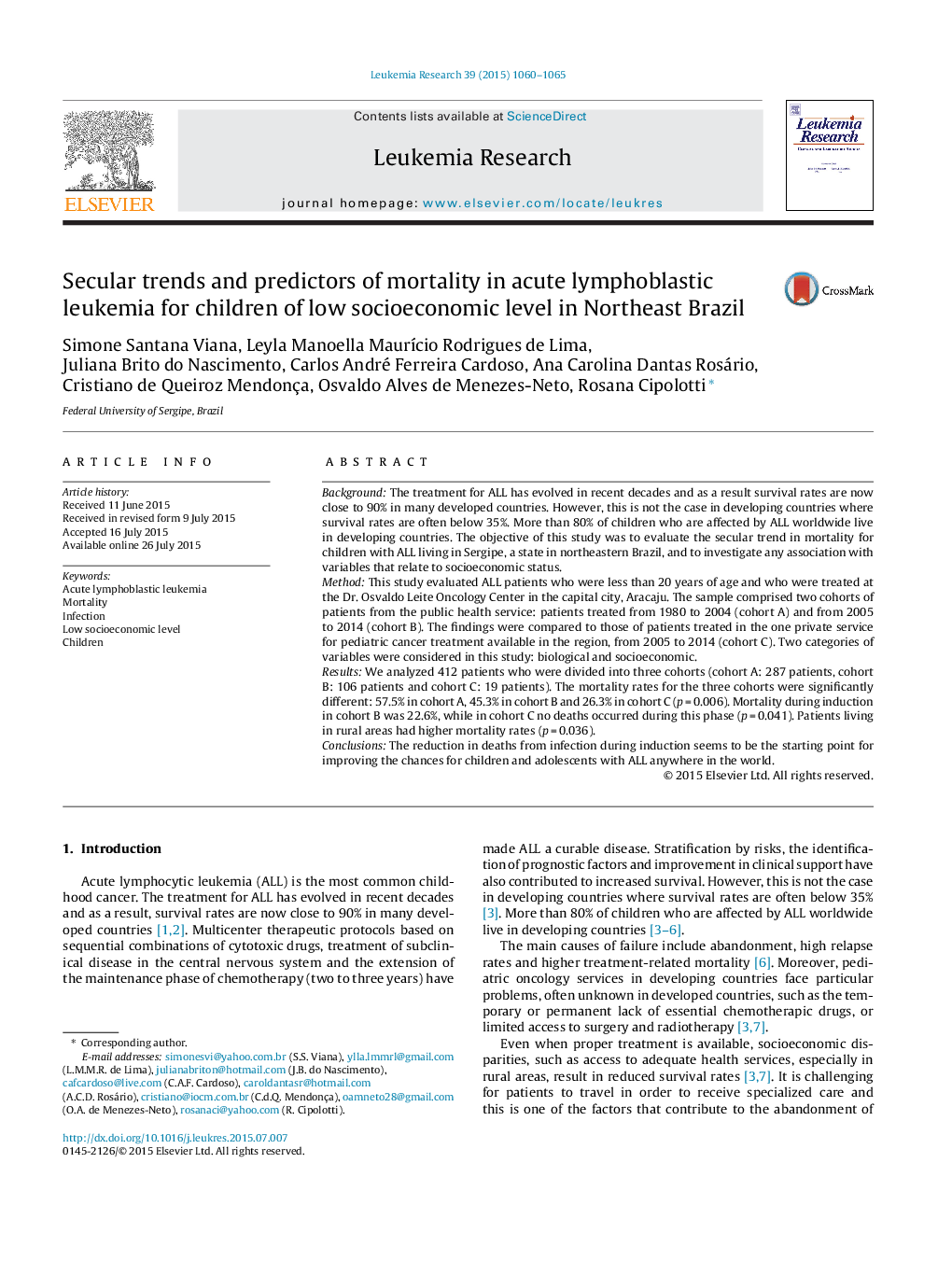| Article ID | Journal | Published Year | Pages | File Type |
|---|---|---|---|---|
| 2136500 | Leukemia Research | 2015 | 6 Pages |
•We focused our study on the issues faced by clinicians treating children with ALL in the lower socioeconomic areas of Brazil.•We evaluated the results of 35 years of LLA treatment comparing a historical cohort of 25 years to a more recent cohort of 10 years.•Our study highlights that abandonment is not currently a major cause of treatment failure.•We identified that infection during induction is the major component associated to mortality.
BackgroundThe treatment for ALL has evolved in recent decades and as a result survival rates are now close to 90% in many developed countries. However, this is not the case in developing countries where survival rates are often below 35%. More than 80% of children who are affected by ALL worldwide live in developing countries. The objective of this study was to evaluate the secular trend in mortality for children with ALL living in Sergipe, a state in northeastern Brazil, and to investigate any association with variables that relate to socioeconomic status.MethodThis study evaluated ALL patients who were less than 20 years of age and who were treated at the Dr. Osvaldo Leite Oncology Center in the capital city, Aracaju. The sample comprised two cohorts of patients from the public health service: patients treated from 1980 to 2004 (cohort A) and from 2005 to 2014 (cohort B). The findings were compared to those of patients treated in the one private service for pediatric cancer treatment available in the region, from 2005 to 2014 (cohort C). Two categories of variables were considered in this study: biological and socioeconomic.ResultsWe analyzed 412 patients who were divided into three cohorts (cohort A: 287 patients, cohort B: 106 patients and cohort C: 19 patients). The mortality rates for the three cohorts were significantly different: 57.5% in cohort A, 45.3% in cohort B and 26.3% in cohort C (p = 0.006). Mortality during induction in cohort B was 22.6%, while in cohort C no deaths occurred during this phase (p = 0.041). Patients living in rural areas had higher mortality rates (p = 0.036).ConclusionsThe reduction in deaths from infection during induction seems to be the starting point for improving the chances for children and adolescents with ALL anywhere in the world.
